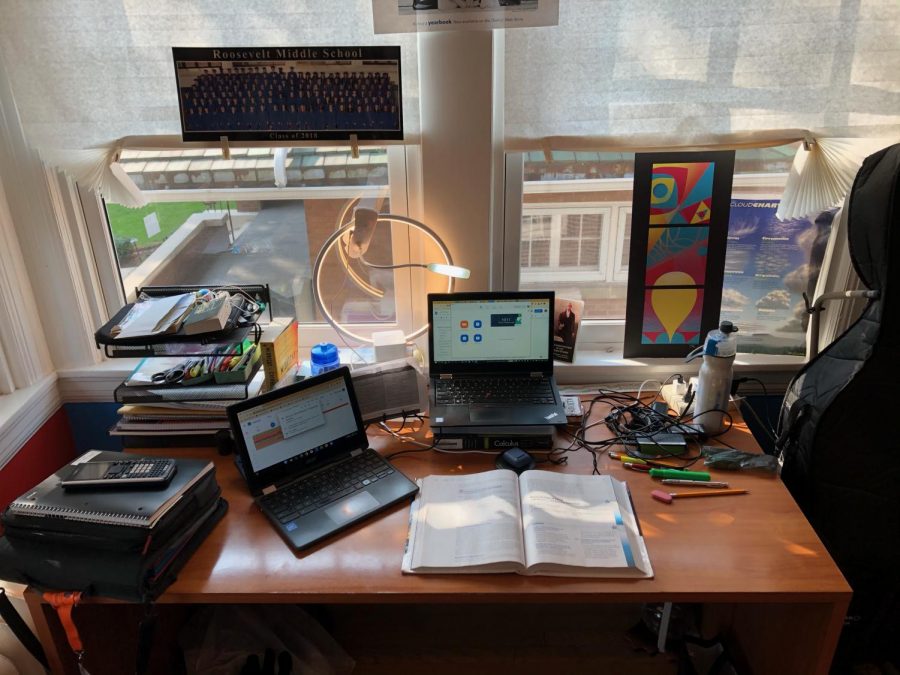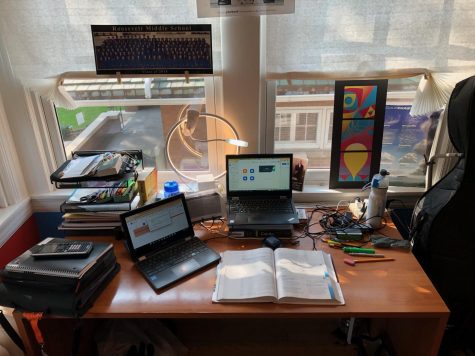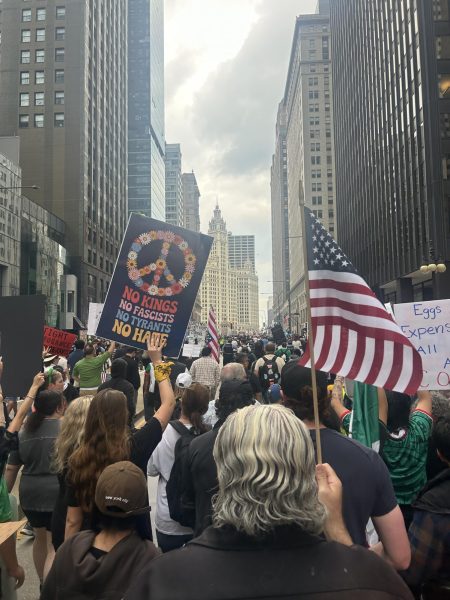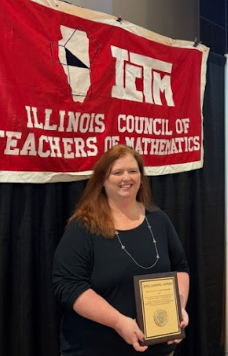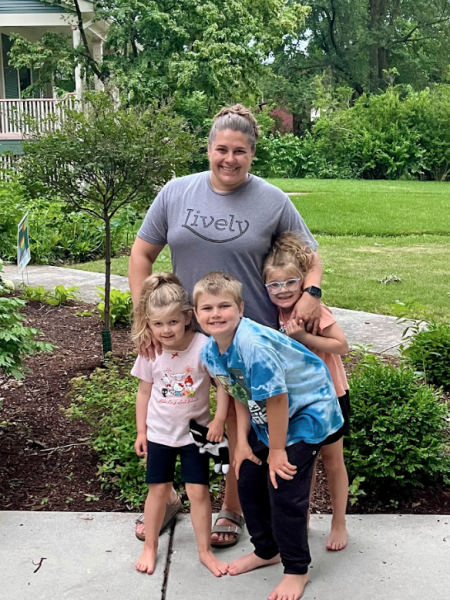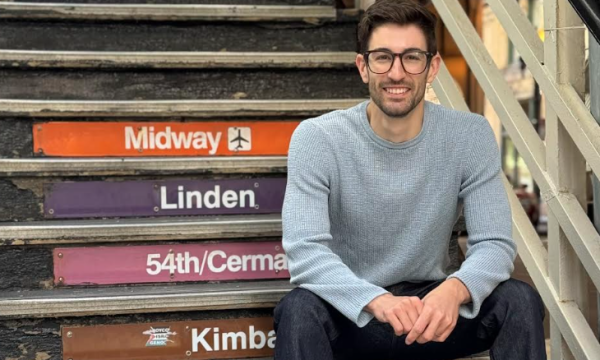The Great Debate: Zoom or Meet?
Mellman’s e-learning work station.
As we continue a chaotic and treacherous start to our new decade, teachers and students alike are forced to adjust to the nuances of long-term remote learning. For the fall semester, OPRF has transitioned to completely synchronous remote learning divided with an AB block schedule rather than the asynchronous system used in the spring. Many different opinions exist on how to approach this new way of learning, and there is little consistency between courses, which can distract from the main focus of school. The debate between using Google Meet and Zoom is a perfect example of the many unknowns that still exist in our new remote learning environment.
A plan to start the school year is important for students like junior Tim Mellman, whose extracurricular activities and social lives were cut off suddenly by the COVID-19 shutdown. To Mellman, the transition this school year from asynchronous to synchronous learning means a shift from a day full of busywork with limited social interaction to real-time interaction with teachers and classmates, better replicating the communal atmosphere of a classroom.
“Synchronous learning is significantly better,” Mellman said. “It allows students to make connections with classmates, even if they’re not great connections, through breakout rooms and just seeing other people’s faces … it’s better than nothing.”
While there are still some critics of completely synchronous learning, the most prevalent debate has been over platforms for long-term remote learning. The two most common are Zoom and Google Meet. However, students have had mixed feelings about the platforms teachers utilize.
Junior Charles Dear prefers to use Google Meet over Zoom due to its simplicity. “You don’t have to jump through (as) many hoops (as) Zoom with meeting passcodes and connectivity,” he said. “I’ve had a couple of instances with Zoom where I was late to a class or couldn’t get in because I was still figuring things out.”
Even so, Dear respects the notion that teachers are intentional in which platform they use: if they need breakout rooms, they will use Zoom; if they want to feel more secure in their classrooms, they will use Google Meet.
Mellman, however, thinks the amount of features Zoom provides are essential to a successful synchronous learning environment. “It’s easier to actually see everyone’s faces … breakout rooms are a huge plus,” Mellman said. “Whereas, with Google Meet, you don’t have the breakout rooms, (and) you can’t see more than 20 people’s faces at a time.” For Mellman, being able to see everyone and everyone’s faces and interact with classmates in smaller groups, better simulating a normal school day, is essential.
A major concern, for parents, teachers, and students alike, is a new trend called “Zoombombing.” Zoombombing happens when an unannounced visitor, whether it be a student from another class or someone from outside the school district, hacks into a Zoom class. Zoom poses a greater security risk to students and teachers, because anyone with the link can join the call, whereas Google Meet restricts participants to students with school-specific Google accounts.
Some “Zoombombing” incidents have been reported in the Chicago area, including one at OPRF. The teacher declined to comment.
At Hinsdale Central and Hinsdale South High Schools, of Hinsdale School District 86, a student outside of the district Zoombombed a class after he was given the link by another student, the District said in a statement. Once in the call, the student used a racial slur and exposed himself to the participants.
“While these deplorable acts were perpetrated by someone outside of our district, that does not mitigate their severity or the need for us to acknowledge and address them,” the district’s statement reads. “We will be vigilant in our fight against any and all forms of racism … as for the display of nudity, there is no room for that type of juvenile, immature behavior in our learning environment.”
In the spring, the Hinsdale School District elected to use Google Meet as their primary form of distance learning. Some teachers, however, elected to use the free version of Zoom, said Keith Bockwoldt, the Chief Information Officer at Hinsdale Central High School. Unauthenticated private Zoom accounts enable anyone with the code to “Zoombomb.” The Hinsdale School District is working to transition students and staff away from those accounts.
The incident occurred at the beginning of Hinsdale’s school year, when not everyone was authenticated with Hinsdale-licensed Zoom accounts. The goal, Bockwoldt said, is to get all Hinsdale 86 students authenticated with Hinsdale-licensed Zoom accounts to prevent further Zoombombings. Students can still pass along information outside of the district, he said, but it does no good, since the students outside of the district will not be able to authenticate and inevitably be caught.
According to Christopher Thieme, the Executive Director of Educational Technology at OPRF, the OPRF tech department has also taken immediate steps to prevent further Zoombombing.
“The Educational Technology department has prioritized keeping digital classrooms secure for years,” Thieme said. “With the switch to full remote learning, we knew those with bad intentions would be putting in extra effort to exploit any vulnerability.” With this in mind, the department shifted its focus to two key areas: working with Zoom and Google to create safe platforms for online learning and providing best practices to staff and students to secure online classrooms.
Nevertheless, classmates being able to see and interact with each other on a consistent basis is an advantage not provided by last year’s asynchronous learning plan, whether it be on Google Meet or Zoom. While current senior Gabe Morelli saw some advantages in asynchronous learning, such as having the freedom to control the time intervals he spent on each subject, he felt upset that he was unable to get any closure with his classmates in the spring.
Students including Mellman have also expressed concern over the amount of material covered concisely in a synchronous learning schedule divided into “A days” and “B days.”
“If you look at the amount of time actually spent in class remotely … we have about three-fifths the amount of time actually in class than … we would if we were in person,” Mellman said, citing the 60 minutes spent in each class every two days remotely compared to the 100 minutes spent in class every two days in-person, where technical difficulties are nonexistent and interacting with classmates is easier. With the current remote learning schedule, Mellman said, teachers have less time to cover more material. That amount of time is shortened by inevitable technical difficulties and difficulty interacting with students.
Additionally, there is still no consistent policy on whether students need to keep their cameras on during class. There are many cases where students stay on mute for prolonged periods of time or refuse to turn their cameras on. However, many, including Mellman consider a major advantage of synchronous learning to be seeing their peers’ faces.
Freshman Alena Anderson said that teachers should encourage students to keep their cameras on, but not force them to. “It’s nice to be able to see the other people in your class rather than be looking at a bunch of black squares,” she said.
There are many unknowns in this new era of learning, and it appears there are no right answers. However, the district is continually reaching out and hosting opportunities for community input, such as regular ThoughtExchanges, where students, teachers, and parents can anonymously share their opinions on issues in the OPRF community.
“I understand that it’s not necessarily their job,” one respondent said, “but (teachers) need to recognize that life isn’t normal for students right now.”
Send us photos of your at-home working environment, plus your name and grade! We might publish them in our next edition. Email us a high resolution .jpeg or .img at [email protected]!

